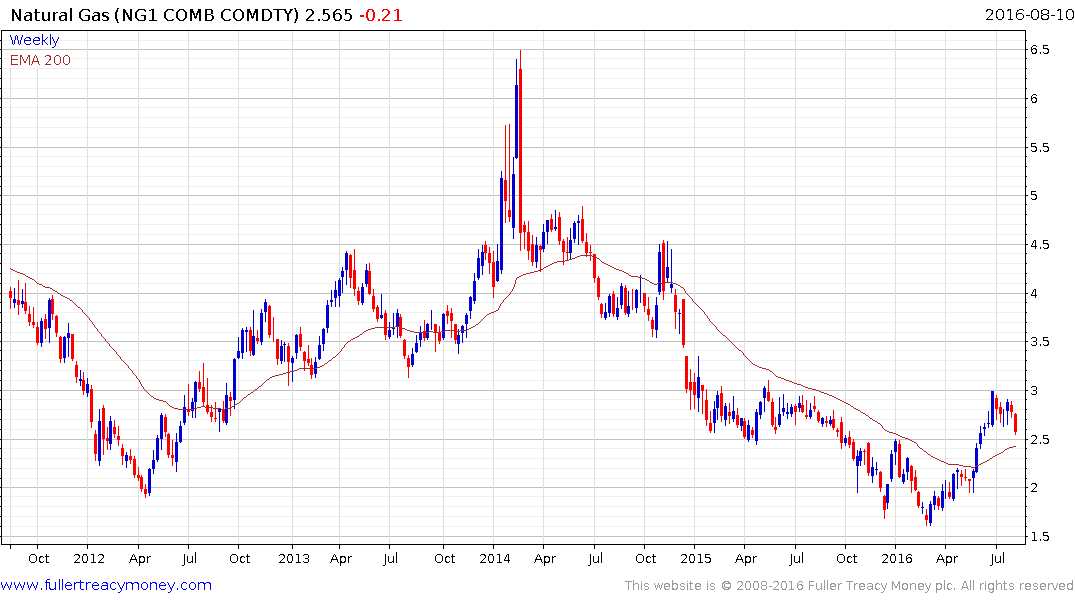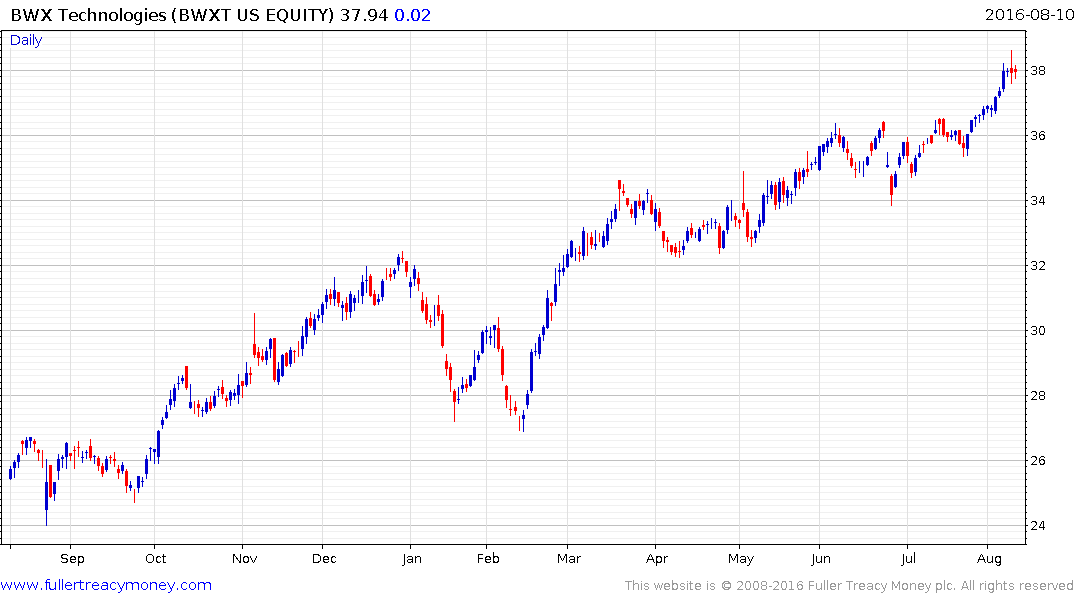Musings from the Oil Patch August 9th 2016
Thanks to a subscriber for this edition of Allen Brooks’ ever interesting report for PPHB. Here is a section on the nuclear sector:
Many of the nuclear power plants that were built in the 1960s and 1970s are now approaching the end of their commercial lives. The challenge is that nuclear power plants have the potential for very long operating lives, often on the order of 80 years, meaning that those older plants might have an additional 20 or 30 years of operating life remaining. The issue is that over their very long lives, these nuclear plants require extensive and costly periodic upgrades and repairs. In order to finance these modifications, the plants must generate significant profits during their operating lives. Low coal and now low natural gas prices have undercut the price of nuclear power, often making these plants the highest cost fossil fuel plants in utility company portfolios. These economic challenges ignore the fact that nuclear power plants have the highest operating ratios of all power plants, meaning that they produce power when people need it and that the power output is carbon-free.
And
Low natural gas prices have seriously undercut the power prices for the nuclear power plants upstate, to the point that the owners – Exelon (EXC-NYSE) and Entergy – have threatened to shut down the plants. If that were to happen, New York State’s plan to have half its power coming from clean energy sources by 2030 would be doomed. In fact, the state has determined that if the nuclear power plants were shut, local utilities would have to rely on power from power plants fueled by dirty gas and coal. That would detract from the governor’s clean energy goal. That goal is why Gov. Cuomo has fought the use of hydraulic fracturing in the state to tap greater supplies of locally produced natural gas. Natural gas, although cheaper than the governor’s favored three sources of clean energy, would have released more greenhouse gases, but it is likely that the cost to consumers would have been less than what will happen in the future. Gov. Cuomo has championed a plan that was embraced by New York’s Public Service Commission and will force utility customers in the state to pay nearly $500 million a year in subsidies designed to keep the three upstate nuclear power plants operating. The Indian Point plant will not receive any subsidy funds because downstate power prices are sufficiently high that the plant can earn a profit.
According to the Public Service Commission, starting in 2017, the subsidies will cost utility ratepayers in New York State $962 million over two years. However, the overall cost of the clean energy program to utility customers would be less than $2 a month, according to the Public Service Commission. The chairman of the commission said that state officials had calculated the social and economic benefits of the program, including the reduction of carbon emissions, lower prices for electricity and more jobs in the electricity generation business, and that these benefits would be greater than the cost of the subsidies. Environmental groups are fighting back, claiming that while they supported the governor’s plan to mandate the purchase of renewable energy by utilities, they viewed the magnitude of the subsidies that could amount to several billion dollars over the 12 years to 2030 as a mistake. Exelon, the owner of two of the three up-state nuclear power plants applauded the Public Service Commission announcement and pledged to invest $200 million in the plants next year if the plan is approved.
Environmentalists who are serious about clean energy should pay attention to the comments of Michael Shellenberger, the president of nonprofit research and policy organization Environmental Progress. He said that nuclear power plants produce so much more energy than other forms that they can be more environmentally friendly than even renewables when all the mining, development and land disturbances are taken into account. As Mr. Shellenberger put it, “from the whole life-cycle analysis, it’s just better.” Of course, on the other side of the issue is someone such as Abraham Scarr, director of the Illinois Public Interest Research Group, a consumer advocate group, who said, “We should be building the 21st century energy system and not continuing to subsidize the energy system of the past.”
Here is a link to the full report.
The above paragraphs highlight just how much of an influence low natural gas prices have had on the utility sector and the broader energy mix. Closing down nuclear plants because the cost of upgrades and repairs cannot be justified when competition with natural gas is so intense suggests demand for the commodity is going to intensify in coming years if nuclear is not subsidized.

The price of natural gas almost doubled between early March and early July and has been confined to a range since, in what continues to look like a reversionary consolidation. It has steadied somewhat in the region of $2.50 but a clear upward dynamic will be required to signal a return to demand dominance.
The broader point is that natural gas fell more than 75% between its early 2014 peak and the March low so it is highly competitive with just about any other energy source even after the recent rally. That is creating demand for the commodity and the recovery trajectory can be given the benefit of the doubt provided prices continue to find support in the region of the trend mean.

China remains the great hope for nuclear energy construction companies with its aggressive build schedule. However it is also moving into the construction sector itself and is already exporting its own versions of reactors. As a result many related shares are likely to continue to operate in a challenging environment. One exception is BWX Technologies (formerly Babcock and Wilcox) which remains in a steep but consistent medium-term uptrend.


